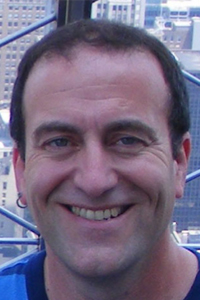Alexander GM, Heiman-Patterson TD, Bearoff F, Sher RB, Hennessy L, Terek S, Caccavo N, Cox GA, Philip VM, Blankenhorn EA. 2022 Identification
of quantitative trait loci for survival in the mutant dynactin p150Glued mouse model
of motor neuron disease. PLoS ONE 17(9): e0274615.
Martin P*, Kigoshi-Tansho Y*, Sher RB, Ravenscroft G, Stauffer J, Kumar R, Yonashiro R, Müller T, Griffith C, Allen W,
Pehlivan D, Harel T, Zenker M, Howting D, Schanze D, Faqeih E, Almontashiri N, Maroofian
R, Houlden H, Mazaheri N, Galehdari H, Ganka D, Posey J, Ryan M, Lupski J, Laing N,
Joazeiro C, and Cox G. 2020. NEMF mutations that impair ribosome-associated quality
control are associated with neuromuscular disease. Nature Communications. 11(1): 4625.
Sayed-Zahid AA*, Sher RB* (*co-first Authors), Stacey RS, Anderson LC, Patenaude KE, Cox GA. 2019. Functional
rescue of congenital muscular dystrophy with megaconial myopathy in a mouse model
of the disease. Human Molecular Genetics. doi: 10.1093/hmg/ddz068.
Weatherly LM, Nelson AJ, Shim J, Riitano AM, Gerson ED, Hart AJ, de Juan-Sanz J, Ryan
TA, Sher RB, Hess ST, Gosse JA. 2018. Antimicrobial Agent Triclosan Disrupts Mitochondrial Structure,
Revealed by Super-resolution Microscopy, and Inhibits Mast Cell Signaling via Calcium
Modulation. Toxicology and Applied Pharmacology 349: 39-54.
Sher RB. 2017. The Interaction Of Genetics And Environmental Toxicants In Amyotrophic Lateral
Sclerosis: Results From Animal Models. Neural Regeneration Research 12(6): 903-906.
Powers S, Kwok S, Lovejoy E, Lavin T, Sher RB. 2017. Embryonic Exposure to the Environmental Neurotoxin BMAA Negatively Impacts
Early Neuronal Development and Progression of Neurodegeneration in the Sod1-G93R Zebrafish
Model of Amyotrophic Lateral Sclerosis. Toxicological Sciences 157(1): 129-140. **Editor’s Highlight**
Goody MF, Sher RB, Henry CA. 2015. Hanging On For The Ride: Adhesion To The Extracellular Matrix Mediates
Cellular Responses In Skeletal Muscle Morphogenesis And Disease. Developmental Biology.
401(1):75-91.
Heiman-Patterson TD, Blankenhorn EP, Sher RB, Jiang J, Welsh P, Dixon MC, Jeffrey JI, Wong P, Cox GA, Alexander GM. 2015. Genetic
Background Effects on Disease Onset and Lifespan of the Mutant Dynactin p150Glued
Mouse Model of Motor Neuron Disease PLoS One. 10(3): e0117848
Sher RB*, Heiman-Patterson MD* (*co-first Authors), Blankenhorn EA, Jiang J, Alexander G,
Deitch JS, Cox GA. 2014. A Major QTL on Mouse Chromosome 17 Resulting in Lifespan
Variability in SOD1-G93A Transgenic Mouse Models of Amyotrophic Lateral Sclerosis.
Amyotrophic Lateral Sclerosis and Frontotemporal Degeneration. 15(7-8): 588-600.
Li Z, Wu G, Sher RB, Khavandgar Z, Hermansson M, Cox GA, Doschak MR, Murshed M, Beier F, Vance DE. 2014.
Choline Kinase Beta is Required for Normal Endochondral Bone Formation. Biochim Biophys
Acta (PMID:24637075).
Sher RB, Cox GA, Ackert-Bicknell C. 2012. Development and Disease of Mouse Muscular and Skeletal
Systems. In “The Laboratory Mouse, Second Edition.” (HJ Hedrich. Ed.). Elsevier Inc.,
San Diego.
Sher, RB, Cox GA, Mills KD, Sundberg JP. 2011. Rhabdomyosarcomas in aging A/J mice. PLoS One.
6(8): e23498.
Mitsuhashi S, Hatakeyama H, Karahashi M, Koumura T, Nonaka I, Hayashi YK, Noguchi
S, Sher RB, Nakagawa Y, Manfredi G, Goto Y, Cox GA, Nishino I. 2011. Muscle choline kinase beta
defect causes mitochondrial dysfunction and increased mitophagy. Human Molecular Genetics
20(19): 3841-3851
Mitsuhashi S, Ohkuma A, Talim B, Karahashi M, Koumura T, Aoyama C, Kurihara M, Qunlivan
R, Sewry C, Mitsuhashi H, Goto K, Koksai B, Kale G, Ikeda K, Taguchi R, Noguchi S,
Hayashi YK, Nonaka I, Sher RB, Sugimoto H, Nakagawa Y, Cox GA, Topaloglu H, Nishino I. 2011. A congenital muscular
dystrophy with mitochondrial structural abnormalities caused by defective de novo
phosphatidylcholine biosynthesis. American Journal of Human Genetics. 12(2): 79-86.
Heimann-Patterson TD, Sher RB, Blankenhorn EA, Alexander G, Deitch JS, Kunst CB, Maragakis N, Cox G. 2011. Effect
of Genetic Background on Phenotype Variability in Transgenic Mouse Models of Amyotrophic
Lateral Sclerosis: A window of opportunity in the search for genetic modifiers. Amyotrophic
Lateral Sclerosis 12(2): 79-86.
Wu G, Sher RB, Cox GA, Vance DE. 2010. Differential expression of choline kinase isoforms in skeletal
muscle explains the phenotypic variability in the rostrocaudal muscular dystrophy
mouse. Biochim Biophys Acta. 1801(4): 446-454
Wu G, Sher RB, Cox GA, Vance DE. 2009. Understanding the muscular dystrophy caused by deletion
of choline kinase beta in mice. Biochim Biophys Acta. 1791(5): 347-356.
Sher RB, Aoyama C, Huebsch KA, Ji S, Kerner J, Yang Y, Frankel WN, Hoppel CL, Wood PA, Vance
DE, Cox GA. 2006. A rostrocaudal muscular dystrophy caused by a defect in choline
kinase beta, the first enzyme in phosphatidylcholine biosynthesis. Journal of Biological
Chemistry 281(8): 4938-4948.
Huebsch KA, Kudryashova E, Wooley CM, Sher RB, Seburn KL, Spencer MJ, Cox GA. 2005. Mdm muscular dystrophy: interactions with calpain
3 and a novel functional role for titin’s n2a domain. Human Molecular Genetics 14(19):
2801-2811.
Wooley CM, Sher RB, Frankel WN, Cox GA, and Seaburn KL. 2005. Gait analysis detects early changes in
transgenic SOD1(G93A) mice. Muscle Nerve 32: 43-50.

